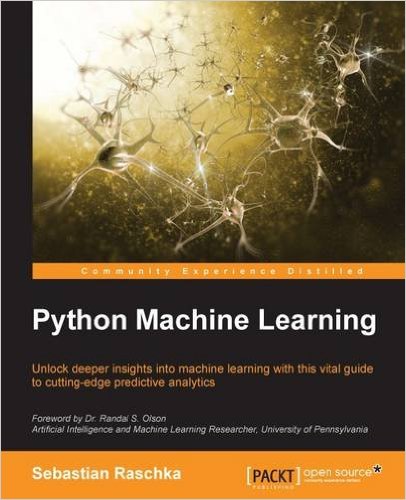Unlock deeper insights into Machine Leaning with this vital guide to cutting-edge predictive analytics
About This Book
- Leverage Python’s most powerful open-source libraries for deep learning, data wrangling, and data visualization
- Learn effective strategies and best practices to improve and optimize machine learning systems and algorithms
- Ask – and answer – tough questions of your data with robust statistical models, built for a range of datasets
Who This Book Is For
If you want to find out how to use Python to start answering critical questions of your data, pick up Python Machine Learning – whether you want to get started from scratch or want to extend your data science knowledge, this is an essential and unmissable resource.
What You Will Learn
- Explore how to use different machine learning models to ask different questions of your data
- Learn how to build neural networks using Pylearn 2 and Theano
- Find out how to write clean and elegant Python code that will optimize the strength of your algorithms
- Discover how to embed your machine learning model in a web application for increased accessibility
- Predict continuous target outcomes using regression analysis
- Uncover hidden patterns and structures in data with clustering
- Organize data using effective pre-processing techniques
- Get to grips with sentiment analysis to delve deeper into textual and social media data
In Detail
Machine learning and predictive analytics are transforming the way businesses and other organizations operate. Being able to understand trends and patterns in complex data is critical to success, becoming one of the key strategies for unlocking growth in a challenging contemporary marketplace. Python can help you deliver key insights into your data – its unique capabilities as a language let you build sophisticated algorithms and statistical models that can reveal new perspectives and answer key questions that are vital for success.
Python Machine Learning gives you access to the world of predictive analytics and demonstrates why Python is one of the world’s leading data science languages. If you want to ask better questions of data, or need to improve and extend the capabilities of your machine learning systems, this practical data science book is invaluable. Covering a wide range of powerful Python libraries, including scikit-learn, Theano, and Pylearn2, and featuring guidance and tips on everything from sentiment analysis to neural networks, you’ll soon be able to answer some of the most important questions facing you and your organization.
Style and approach
Python Machine Learning connects the fundamental theoretical principles behind machine learning to their practical application in a way that focuses you on asking and answering the right questions. It walks you through the key elements of Python and its powerful machine learning libraries, while demonstrating how to get to grips with a range of statistical models.
The book is available, here.
DSC Resources
- Career: Training | Books | Cheat Sheet | Apprenticeship | Certification | Salary Surveys | Jobs
- Knowledge: Research | Competitions | Webinars | Our Book | Members Only | Search DSC
- Buzz: Business News | Announcements | Events | RSS Feeds
- Misc: Top Links | Code Snippets | External Resources | Best Blogs | Subscribe | For Bloggers
Additional Reading
- What statisticians think about data scientists
- Data Science Compared to 16 Analytic Disciplines
- 10 types of data scientists
- 91 job interview questions for data scientists
- 50 Questions to Test True Data Science Knowledge
- 24 Uses of Statistical Modeling
- 21 data science systems used by Amazon to operate its business
- Top 20 Big Data Experts to Follow (Includes Scoring Algorithm)
- 5 Data Science Leaders Share their Predictions for 2016 and Beyond
- 50 Articles about Hadoop and Related Topics
- 10 Modern Statistical Concepts Discovered by Data Scientists
- Top data science keywords on DSC
- 4 easy steps to becoming a data scientist
- 22 tips for better data science
- How to detect spurious correlations, and how to find the real ones
- 17 short tutorials all data scientists should read (and practice)
- High versus low-level data science
Follow us on Twitter: @DataScienceCtrl | @AnalyticBridge

